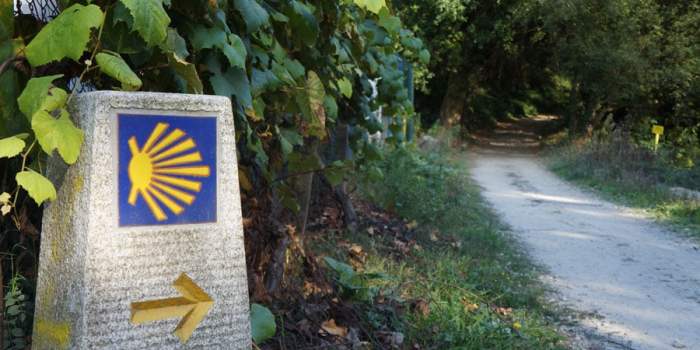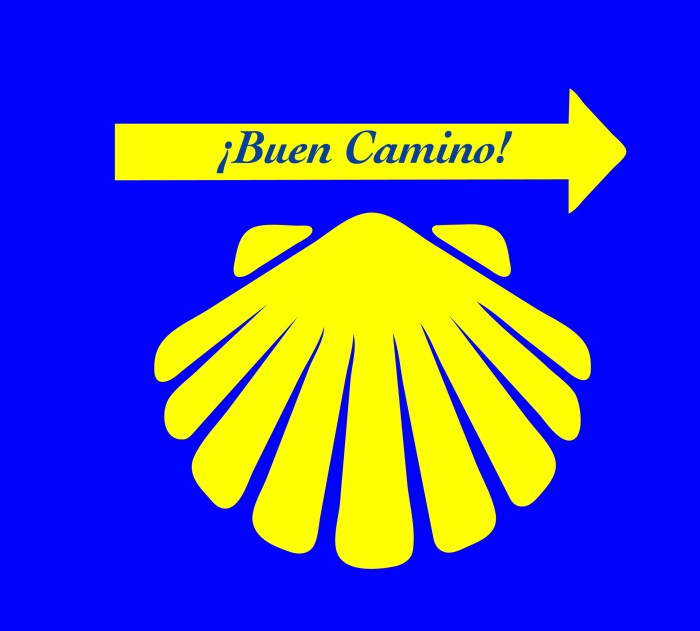Como se llama la concha del camino de santiago, or the scallop shell, holds a profound significance in the pilgrimage along the Camino de Santiago. This iconic symbol, deeply rooted in history, culture, and religion, has become an enduring representation of the journey and its transformative power.
The scallop shell, known as “vieira” in Spanish, has been associated with the Camino de Santiago for centuries. Legend has it that the apostle Saint James, the patron saint of the pilgrimage, was guided to his burial site by a miraculous appearance of stars that illuminated the path like a milky way.
The scallop shell, with its radiating ridges resembling the Milky Way, became a symbol of divine guidance and protection for pilgrims.
1. What is the Name of the Shell on the Camino de Santiago?

The official name of the shell associated with the Camino de Santiago is the scallop shell ( Pecten maximus). It is also commonly known as the pilgrim’s shell or the Way of St. James shell.
The scallop shell has been a symbol of the Camino de Santiago since the Middle Ages, when pilgrims carried it as a sign of their journey. It is believed that the shell was first used by pilgrims who washed ashore on the coast of Galicia, Spain, after being blown off course by a storm.
They recognized the shell as a symbol of their safe arrival and adopted it as a symbol of the pilgrimage.
The scallop shell has a rich cultural and religious symbolism. It is associated with the Apostle James, the patron saint of Spain, who is said to have brought Christianity to the Iberian Peninsula. The shell is also seen as a symbol of hope, renewal, and rebirth.
2. Types of Shells on the Camino de Santiago: Como Se Llama La Concha Del Camino De Santiago

There are several different types of shells that can be found on the Camino de Santiago. The most common type is the Pecten maximus, or great scallop. This shell is large and has a distinctive ribbed surface. Other types of shells that can be found include the Pecten jacobaeus, or pilgrim’s scallop, which is smaller and has a smoother surface, and the Mimachlamys varia, or variegated scallop, which is smaller and has a more colorful surface.
The different types of shells have different significance in the context of the pilgrimage. The Pecten maximusis the most commonly used shell, as it is the largest and most easily recognizable. The Pecten jacobaeusis also popular, as it is believed to be the shell that was first used by pilgrims.
3. Collecting Shells on the Camino de Santiago
Collecting shells on the Camino de Santiago is a tradition that dates back to the Middle Ages. Pilgrims would collect shells along the way as a way to mark their progress and to remember their journey. Today, many pilgrims still collect shells as a way to connect with the history and tradition of the Camino.
There are no specific rules about how to collect shells on the Camino. Some pilgrims collect shells that they find on the ground, while others collect shells that they find in the sea. There are also a number of shops and stalls along the Camino where pilgrims can buy shells.
The collected shells can be used in a variety of ways. Some pilgrims carry them in their backpacks, while others attach them to their clothing or hats. Some pilgrims also use the shells to decorate their homes or to create souvenirs.
4. Using Shells as a Symbol of the Camino de Santiago

The scallop shell is a powerful symbol of the Camino de Santiago. It is used by pilgrims to mark their progress, to remember their journey, and to connect with the history and tradition of the Camino. The shell is also a symbol of hope, renewal, and rebirth.
There are many ways in which pilgrims display the scallop shell. Some pilgrims wear the shell on a necklace or bracelet. Others attach the shell to their backpacks or clothing. Some pilgrims also use the shell to decorate their homes or to create souvenirs.
The scallop shell is a reminder of the journey that pilgrims have undertaken and the challenges that they have overcome. It is also a symbol of the hope and renewal that pilgrims find on the Camino.
FAQ Insights
What is the official name of the shell associated with the Camino de Santiago?
The official name of the shell associated with the Camino de Santiago is the scallop shell, known as “vieira” in Spanish.
What is the historical significance of the shell in relation to the pilgrimage?
The scallop shell has been associated with the Camino de Santiago for centuries, symbolizing divine guidance and protection for pilgrims. Legend has it that the apostle Saint James was guided to his burial site by a miraculous appearance of stars that illuminated the path like a milky way, resembling the radiating ridges of the scallop shell.
What is the cultural and religious symbolism of the shell?
The scallop shell holds cultural and religious significance, representing hope, resilience, and the transformative power of pilgrimage. It has become a universal symbol of the Camino de Santiago, adorning backpacks, clothing, and souvenirs as a testament to the pilgrim’s journey.